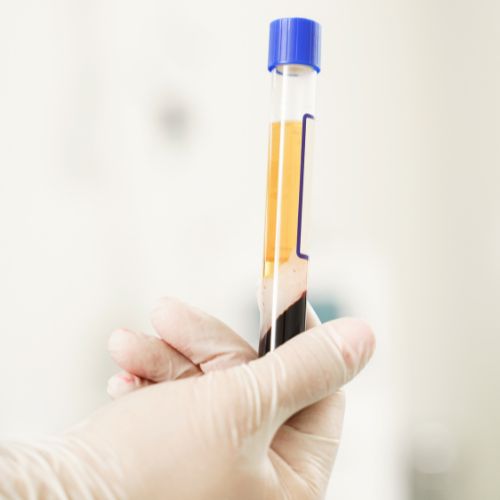Regenerative Medicine (PRP)
What is Regenerative Medicine?
Regenerative medicine treats chronic pain by replacing, engineering, or regenerating cells and tissues to simulate the body’s own repair mechanisms. Regenerative medicine can help treat osteoarthritis, worn cartilage, degenerative nerve damage, as well as torn tendons, ligaments, cartilage, and muscle.
EVERYTHING TO KNOW ABOUT
Regenerative Medicine (PRP)
What It May Treat?
- Elbow Conditions: tennis elbow, golfer’s elbow, elbow osteoarthritis, UCL tears, tendon tears, arthritis.
- Feet/Ankle Conditions: ligament tears, osteoarthritis, tendon tears, Achilles issues, arthritis
- Spine/Neck Conditions: degenerative disc disease, herniated discs, facet injections, spondylolysis, tendon tears, arthritis
- Shoulder Conditions: rotator cuff injuries, labrum tears, overuse injuries, tendon tears, arthritis
- Hip Conditions: bursitis, avascular necrosis, tendon tears, hip osteoarthritis
- Knee Conditions: torn ACL, meniscus tear, degenerative problems of the knee, tendon tears, arthritis
- Hand Conditions: carpal tunnel syndrome, thumb arthritis, TFCC tears, tendon tears, arthritis
Platelet-Rich Plasma (PRP) Therapy for Face, Hair, and Joints
Revitalize Your Skin, Regrow Your Hair, and Relieve Joint Pain Naturally
PRP (Platelet-Rich Plasma) therapy is a cutting-edge, natural treatment that uses your body’s own healing factors to rejuvenate your skin, stimulate hair growth, and alleviate joint pain. Safe, effective, and minimally invasive, PRP is a trusted solution for those seeking non-surgical aesthetic and orthopedic treatments.

PRP for Facial Rejuvenation (Vampire Facial)
PRP facials, often called the Vampire Facial, harness the power of your own plasma to reduce wrinkles, improve skin texture, and restore a youthful glow.
Boosts collagen production for firmer skin
Reduces fine lines, wrinkles, and acne scars
Improves skin tone and hydration
Enhances skin healing for a radiant look
1. A small sample of your blood is drawn.
2. The plasma, rich in growth factors, is separated using a centrifuge.
3. PRP is applied topically or injected into targeted facial areas.
3-4 sessions for optimal results.
PRP for Hair Restoration
Suffering from hair thinning or early-stage hair loss? PRP therapy helps stimulate hair follicles, strengthen existing hair, and promote regrowth naturally.
Encourages thicker, healthier hair growth
Slows hair loss progression
Improves scalp health and blood circulation
Safe for both men and women
1. PRP is extracted from your blood.
2. It is injected into areas of the scalp experiencing hair thinning.
3. Growth factors stimulate dormant hair follicles.
3-6 sessions over a few months.
PRP for Joint Pain & Injury Recovery
PRP injections help reduce inflammation, relieve pain, and accelerate tissue repair for those suffering from joint pain, arthritis, or sports injuries.
Knee osteoarthritis
Shoulder pain & rotator cuff injuries
Tennis elbow & tendonitis
Ligament and cartilage injuries
1. A blood sample is processed to isolate PRP.
2. PRP is injected into the affected joint or injured tissue.
3. Growth factors promote healing and reduce inflammation.
1-3 sessions, depending on the condition.
Why Choose Our PRP Therapy?
- Non-surgical, natural healing
- Quick recovery & minimal downtime
- Safe, effective, and backed by science, our machine is one of the industry’s best
- Performed by experienced medical professionals
Schedule Your PRP Consultation Today!
Another Type of Regenerative Medicine...
Prolotherapy
Prolotherapy is a non-surgical treatment for chronic pain and musculoskeletal injuries. Prolotherapy uses proliferation therapy to regenerate and repair damaged tissue.
How is Prolotherapy Done?
During a prolotherapy session, your healthcare provider injects the damaged ligaments with a solution that creates micro-tears. The body then repairs these tears by releasing chemicals that signal for new tissue growth and collagen development. Ultrasound or videofluoroscopy is used to provide a visual map and precisely targeted injections. These injections stimulate the body’s healing response to improve your ligament function and pain level.
What Does The Prolotherapy Solution Consist of?
The prolotherapy solution consists of dextrose (sugar water), saline, and sarapin, along with local anesthetics, such as lidocaine.
How Long Does the Prolotherapy Procedure Take?
Depending on the part of the body the procedure is taking place, prolotherapy treatments typically take about 45 minutes from start to finish.
Treatments are usually performed an average of 3 to 6 times over the course of every 4 to 6 weeks. However, some patients may only need 1 or 2 treatments. Be sure to maintain your follow-up schedule once you get started so that our medical providers can re-assess and track your progress at appropriate intervals.
Important Information Regarding Prolotherapy
Avoid anti-inflammatory medications such as ibuprofen prior to and after your prolotherapy session because they can affect the healing process. Also, inform our providers of all medications you are taking before treatment. Ask your medical provider for a list of medications that are deemed safe to use after the procedure.
What to Expect Following Prolotherapy
Following prolotherapy, patients can expect to feel reduced pain and improved stability. You may also notice that you are able to resume your normal activities without pain, discomfort, or other issues.
Use of Physical or Occupational Therapy
Physical/occupational therapy is recommended to help your body recover and improve function. Prehabilitation and proper recovery from the prolotherapy sessions help to restore normal tissue and movement.
